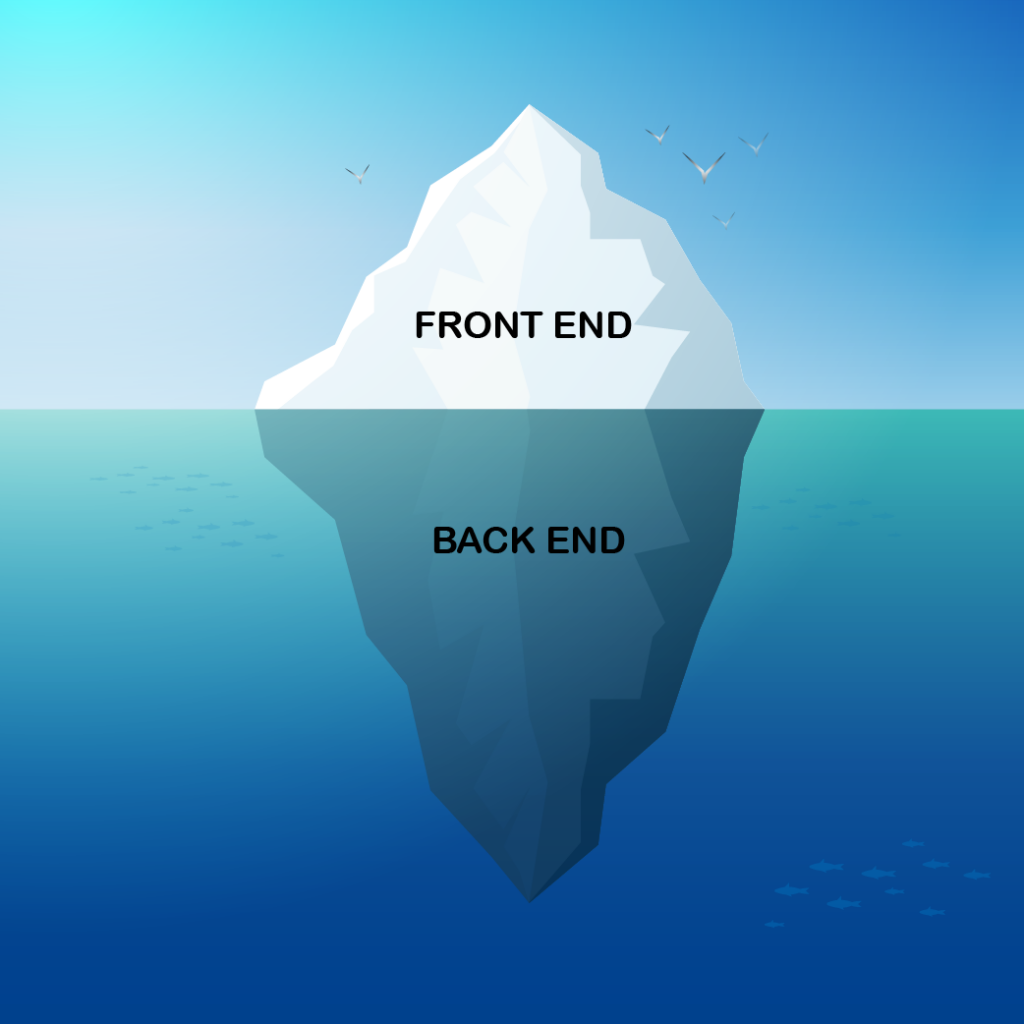
A key player in the creation of websites and mobile applications, the developer front end must adapt to a rapidly changing environment. In addition to the programming languages specific to their job, they must be increasingly open to collaborative and monitoring tools. What are the key trends for 2021? Hard and soft skillsWhat are the most sought-after skills? Whether you're a beginner or a seasoned professional, what training should you take to stay at the top?
Among the 820 IT professions listed by INSEE, the developer front end is all the rage. And that's only to be expected, given that it forms the basis of all websites and mobile applications. Over the years, this developer has been forced to broaden and enrich his portfolio of skills, in order to keep pace with technological developments and the practices inherent in his profession.
Not so long ago, all you had to do was master the arcana of HTML, CSS style sheets and perhaps a little jQuery to create interactive websites. In 2021, that's no longer enough! The skills demanded by companies and recruiters involve mastery of new tools: frameworks extending the field of possibilities, collaborative working tools, not to mention skills in design, mobile web and databases. As a result, the world of front end has become very varied and covers many areas. Here are the different facets.
Developer front end : sa mission in 2021
If the mission of a developer front end has become much richer over time, the core business has not changed: it still involves building user interfaces for websites and web or mobile applications. The image of an iceberg is often used to describe this job, which is similar to that of a web integrator.

The visible part of the iceberg is what a web user sees, the user interface (front end or front stack) when they visit a website or use an app on their mobile phone. The forehead is made up of two complementary sub-assemblies: programming on the one hand, and design and ergonomics on the other. This visible part is carried out by the developer front end.
The invisible part of the iceberg is everything that the user cannot see (back end or back stack), the programmes that run on the servers and the databases where the data is stored. This is the domain of the developer back end.
And what do you call a developer who masters both parts of the iceberg? It's the developer full stack. Rarer, this profile is much more sought-after and therefore more lucrative.
Each type of developer has its own specific working environment.
The languages of front end: give me a design!
The design of a website or app is created by art directors, graphic designers and UX designers (User Interface). They combine their stylistic and layout talents.
Le front end designate is a developer who works in collaboration with these professionals, using software such as Photoshop, InDesign, XD, etc., to build mock-ups, cut them out and supply page templates. They can also limit themselves to graphic layouts and leave the cutting to third parties.
Le front end designer masters HTML, CSS and JavaScript, but his level of JavaScript is limited to the construction of the web interface.
However, with the evolution of HTML and CSS towards HTML 5 and CSS3, the wealth of graphic instructions has become complex.
Not to mention the fact that HTML semantics have to deal with the requirements of Internet referencing, SEO (Search Engine Optimization). A developer front end with SEO skills friendly is particularly popular these days.
It is also common to upgrade CSS knowledge to new languages, such as the LESS (Leaner Sstyle Sheets) or SASS (Syntactically Awesome Style Sheets) with its SCSS syntax, which make CSS writing much easier, more organised and more productive.
Frameworks, the essentials of 2021
With the arrival of powerful frameworks dedicated to forehead such as Vue.js, a front-end designer can build a web interface and produce instructions that were previously the preserve of JavaScript developers. The designer is increasingly moving towards the world of the developer. So how much of the work should go to the designer? How much of the work should go to the developer?
The answer depends on each project. The choice of development frameworks should not be taken lightly, as it can have far-reaching consequences for a company. Some frameworks, such as Angular, require a high level of skill on the part of the developer. Before being fully operational, a developer will have to spend time training, which will have an impact on the company's TCO. Added to this is the risk of not finding a qualified developer and not managing to keep them within the company. The Vue.js framework, on the other hand, is attractive to many companies because it is simple to use and can be produced more quickly.
Other tools that have become essential include Bootstrap and frameworks dedicated to specific designs such as Material UI or Material design. These tools make it easier to create content responsive design able to adapt different screen formats (computers, tablets, mobiles, etc.), both touch-sensitive and non-touch-sensitive.
Faced with the high demand for web development, front-end developers quickly turned to working frameworks. Like the back end (Zend, Symfony, Laravel, etc.), they enable rapid, standardised development.
Angular, React or Vue.js?
Today's developer needs to be familiar with one of the three most popular frameworks: Angular (Google), React (Facebook) or Vue.js. Learning these frameworks is fairly complex: knowledge of ES6, object programming, even mastery of MVC (Model-View-Controller) development. The developer forehead is close to the requirements needed by thick client developers. Some have a background as Java or .NET developers.
There is also a trend towards Vanilla, the pure version of a language. Developers are moving away from frameworks and focusing solely on the power of JavaScript. Indeed, with the arrival of HTML5, JavaScript manages data storage (WebSQL or Embedded, localStorage), the multithreaded (Web Worker), network protocols (WebSocket), design or communication APIs (WebRTC)... the possibilities are vast.
The challenges facing web developers strictly speaking
In contrast to front end designer, the web developer makes extensive use of the JavaScript language. Their skills have evolved considerably, as demand for web applications continues to grow. To respond to these needs, the W3C has also developed JavaScript in concert with other bodies.
with HTML5. Developers looking for object-oriented programming can now draw on a wide range of tools. new JavaScript languages: EcmaScript (ES6) and TypeScript from Microsoft.
Unfortunately, to manage compatibility problems between browsers, web developers now have to rely on transcoders. These are compilers such as Babel, for generating universal JavaScript.
Another challenge is that it must increasingly become part of an industrial coding process, with version management in Git, and publication using package production tools such as webpack.
Mobile front end
Among the developers front endBut we can also consider developers of native and hybrid mobile applications. Native application development is based on specific languages: Java or the Flutter SDK for Android, Objective-C and Swift (Apple) for iOS, C# (Microsoft's Xamarin) or the React Native framework. With these languages, the developer must use specific development workshops: Visual Studio Code (Microsoft), Android Studio or Xcode. CSS skills are not necessary at this stage.
There is also another category of mobile applications where web developers can contribute their expertise: hybrid applications. Mobile screens are designed around web technologies (HTML, CSS, JavaScript) enabling the front end cover mobile needs. In this case, the developer needs to master tools such as Apache Cordova or the Ionic framework, both of which have been developed for mobile applications. open source.
Working methods: mastering collaborative tools
Gone are the days of the lone wolf developing in his own corner! The developer front end works as part of a team. Whether it's working with the product teams to understand requirements, the design teams to find out what the interfaces are going to look like, the SEO researchers, the web copywriters and the development teams. back end to work on data. As a result, they are well versed in collaborative tools: messaging systems such as Slack or Mattermost and mutual aid platforms for IT professionals such as StackOverFlow. Developers earn points for helping others, a quality valued by recruiters. Recruiters are also sensitive to developers who are active on their social networks or who publish on GitHub, which is a guarantee of notoriety.
Permanent watch
Technologies and practices are changing rapidly. In this context, the developer front end must be constantly on the lookout for developments in their field, the emergence of new tools and languages, and the evolution of browsers, etc. This monitoring process uses a variety of tools, including RSS feeds, Twitter and specialist websites.
There are also specialist conferences dedicated to forehead. First introduced in the United States, they have been emulated in France with meetups such as Paris Web, KiwiParty and BlendWebMix. ORSYS is not to be outdone, with its JavaScript JET seminar, launched two years ago, which, given its success, meets the expectations of companies.


